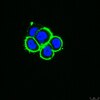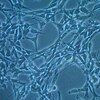06-1423 Sigma-AldrichAnti-phospho-Lck (Tyr505) Antibody
Anti-phospho-Lck (Tyr505) Antibody detects level of phospho-Lck (Tyr505) & has been published & validated for use in WB.
More>> Anti-phospho-Lck (Tyr505) Antibody detects level of phospho-Lck (Tyr505) & has been published & validated for use in WB. Less<<Prodotti consigliati
Panoramica
| Replacement Information |
|---|
Tabella delle specifiche principali
| Species Reactivity | Key Applications | Host | Format | Antibody Type |
|---|---|---|---|---|
| H, R, M, Po, Sh, B | WB | Rb | Affinity Purified | Polyclonal Antibody |
| References |
|---|
| Applications | |
|---|---|
| Application | Anti-phospho-Lck (Tyr505) Antibody detects level of phospho-Lck (Tyr505) & has been published & validated for use in WB. |
| Key Applications |
|
| Physicochemical Information |
|---|
| Dimensions |
|---|
| Materials Information |
|---|
| Toxicological Information |
|---|
| Safety Information according to GHS |
|---|
| Safety Information |
|---|
| Storage and Shipping Information | |
|---|---|
| Storage Conditions | Stable for 1 year at 2-8°C from date of receipt. |
| Packaging Information | |
|---|---|
| Material Size | 100 µL |
| Transport Information |
|---|
| Supplemental Information |
|---|
| Specifications |
|---|
| Global Trade Item Number | |
|---|---|
| Numero di catalogo | GTIN |
| 06-1423 | 04053252297137 |
Documentation
Anti-phospho-Lck (Tyr505) Antibody Certificati d'Analisi
| Titolo | Numero di lotto |
|---|---|
| Anti-phospho-Lck (Tyr505) - NRG1929406 | NRG1929406 |














